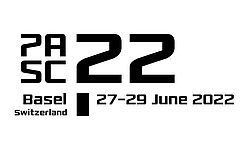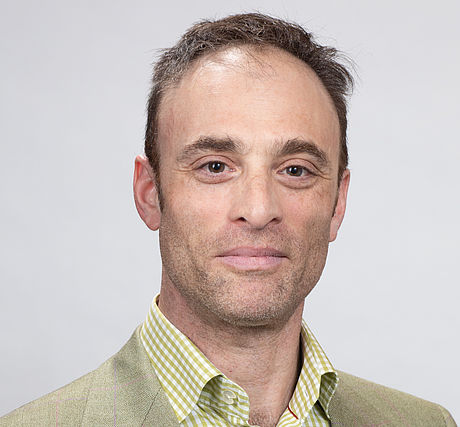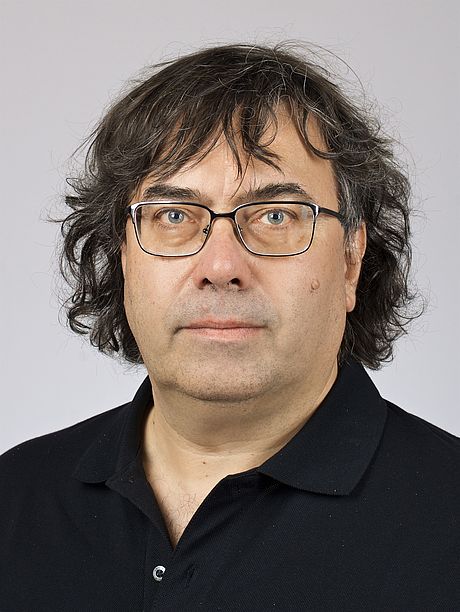Keynote Presentations
From High-Resolution to Global Storm Resolving Models: Achievements and Perspectives
Pier Luigi Vidale (University of Reading, UK)
Monday, June 27, 2022
10:15-11:05
Montreal Room
The increase in availability of high-performance computing has enabled global coupled models to resolve some of the fundamental processes governing the climate system. More explicit representation of eddies in the ocean and of weather systems in the atmosphere impacts the general circulation and reduces inter-model disagreement.
More realistic simulation of the global hydrological cycle at resolutions below 50 km underpins more trustworthy projections of the availability of heat, carbon and water to land vs ocean ecosystems. Global “weather-resolving” models produce reliable global teleconnections that govern regional changes in weather and climate, including extremes (e.g. tropical cyclones). Resolving the ocean mesoscale produces “out-of-trajectory” future climates for Europe.
Global storm-resolving models now operate in the resolution range of 1-10 km, removing some long-standing errors in the simulation of precipitation (location, organization, diurnal cycle, intensity/frequency). However, uncertainties remain with respect to the adequacy of key parameterisations at such scales, motivating research on global cloud-resolving capability.
Pier Luigi Vidale is Professor of Climate System Science at the University of Reading (UoR), Director of the UoR–ECMWF research collaboration, and leads the National Centre for Atmospheric Science global High Resolution Climate Modelling programme. Pier Luigi has led large research projects in the UK and internationally, including the UK-Japan Climate Collaboration (2004-2007), and was Scientific Coordinator of the EU’s H2020 project “PRIMAVERA.” As investigator in the EU’s H2020 NextGEMS, he is currently responsible for identification and analysis of Tropical Cyclones (TCs) simulated by the new generation of global storm-resolving models (~3 km resolution). In terms of future directions, Pier Luigi is a member of World Climate Research Programme’s Digital Earth’s Lighthouse Activity, defining the nature and purpose of Digital Twins for climate.
Since the HPC community has now seen the first supercomputers “break the exaflops barrier,” and the need for computing capabilities to address important challenges for humanity, we take a speculative walk through what might be next for the world of HPC, including technical challenges, opportunities and aspects of potential future architectures.
Full recording available here.
Łukasz Mirosław is the HPC/AI specialist at Microsoft with 16+ years of experience in HPC research. After his PhD in wide genome screening at Max Planck Institute of Cell Biology and Wroclaw University of Technology, he held two post doc positions at University of Zurich in the domain of computational chemistry. A grant holder from Max Planck Society, Herbert Quandt Foundation, Saxony Ministry and Polish-Swiss Research Programme. Currently, he is a member of the Global Black Belt team at Microsoft Azure driving the most advanced HPC/AI projects with leading research institutions and industry.
Black holes are cosmic objects so small and dense, that nothing, not even light can escape their gravitational pull. Until recently, no one had ever seen what a black hole actually looked like. Einstein's theories predict that a distant observer should see a ring of light encircling the black hole, which forms when radiation emitted by infalling hot gas is lensed by the extreme gravity near the event horizon. On April 10th, 2019, the EHT project reported success: using a global network of radio dishes we have imaged a black hole, and we have seen the predicted strong gravitational lensing that confirms the theory of General Relativity at the boundary of a black hole. This talk will cover how this was accomplished, details of the first results, groundbreaking new results, as well as future directions that will enable real-time black hole movies.
Shep Doeleman is Founding Director of the Event Horizon Telescope (EHT) project and led the international team that made the first image of a black hole. He received his bachelor's from Reed College and PhD in astrophysics from MIT. After serving as assistant director of MIT’s Haystack Observatory and receiving a Guggenheim Fellowship in 2012, he moved to the Harvard-Smithsonian Center for Astrophysics, where he co-founded Harvard’s Black Hole Initiative. He is the recipient of the Lancelot M. Berkeley Prize and the Bruno Rossi Prize from the American Astronomical Society, and now leads the next-generation EHT project with a goal to make movies of black holes.
The Challenges of Modern Epidemiology: From Classical Field Studies to Complex Models
Olivia Keiser (University of Geneva, Switzerland)
Wednesday, June 29, 2022
09:00-09:50
Montreal Room
John Snow’s investigations on cholera outbreaks in London in 1854 are often considered to be the origin of epidemiology. By depicting cases on a map, he detected the cause of the disease. In recent times, the methods used in epidemiological research have become increasingly complex and include various inputs, including data on genetic sequences, the environment, and human behavior. This information can be processed in real time and support immediate decision making. In parallel, the amount of published literature is increasing exponentially and open science allows everyone to access and reproduce analyses. However, the COVID-19 pandemic highlighted substantial shortcomings in epidemiologic surveillance. Without capacity building, complex models with unreliable or incorrect inputs produce inaccurate results, resulting in serious policy making implications. Using HIV and COVID-19 as case studies, I will introduce and discuss the benefits and challenges of modern epidemiological methods.
Olivia Keiser is an SNF professor in epidemiology at the Institute of Global Health (IGH), at the University of Geneva. She studied biology in Basel, and then moved to Lausanne where she worked for the Swiss HIV Cohort Study. In 2006, Olivia joined the University of Bern, where her PhD work focused on analysing HIV infected patients in Africa. After receiving an SNF Professorship in 2017, Olivia moved with her group to Geneva. Her research group takes an interdisciplinary approach that combines mathematical modelling (including cost-effectiveness analyses), analyses of cohort data, data- and text mining, systematic reviews, and qualitative research techniques. The current focus is on HIV and COVID-19.
There is Plenty of Room at the Top: Novel Two-Dimensional Materials from the Computational Exfoliation of All Known Compounds
PRACE HPC Excellence Award
Wednesday, June 29, 2022
16:30-17:20
Montreal Room
We screen all experimentally known inorganic materials in order to identify those that could be exfoliated into novel two-dimensional monolayers. The screening protocol first identifies compounds that appear layered, and characterizes with Van-der-Waals density-functional theory the energetics and electronic structure of the 3D parent and the exfoliated monolayer. The search is highly automated – thanks to the materials informatics platform AiiDA, that preserves the provenance for all data and workflows – and the results are openly disseminated on the Materials Cloud. We have identified ~3500 novel monolayers, of which ~2000 are classified as easily exfoliable, leading to suggestions for novel quantum spin Hall insulators (already confirmed experimentally), superconductors, and field-effect transistors.
Full recording available here.
Nicola Marzari has a Laurea degree in physics from the University of Trieste, and a PhD in physics from the University of Cambridge. He holds the chair of Theory and Simulation of Materials at EPFL, where he is the director of the National Center for Computational Design and Discovery of Novel Materials. He heads the Laboratory for Materials Simulations at the Paul Scherrer Institute, and has an Excellence Chair at the University of Bremen. Previous tenured appointments include the first Statutory Chair for Materials Modelling at the University of Oxford, and the Toyota Chair for Materials Processing at the Massachusetts Institute of Technology.








